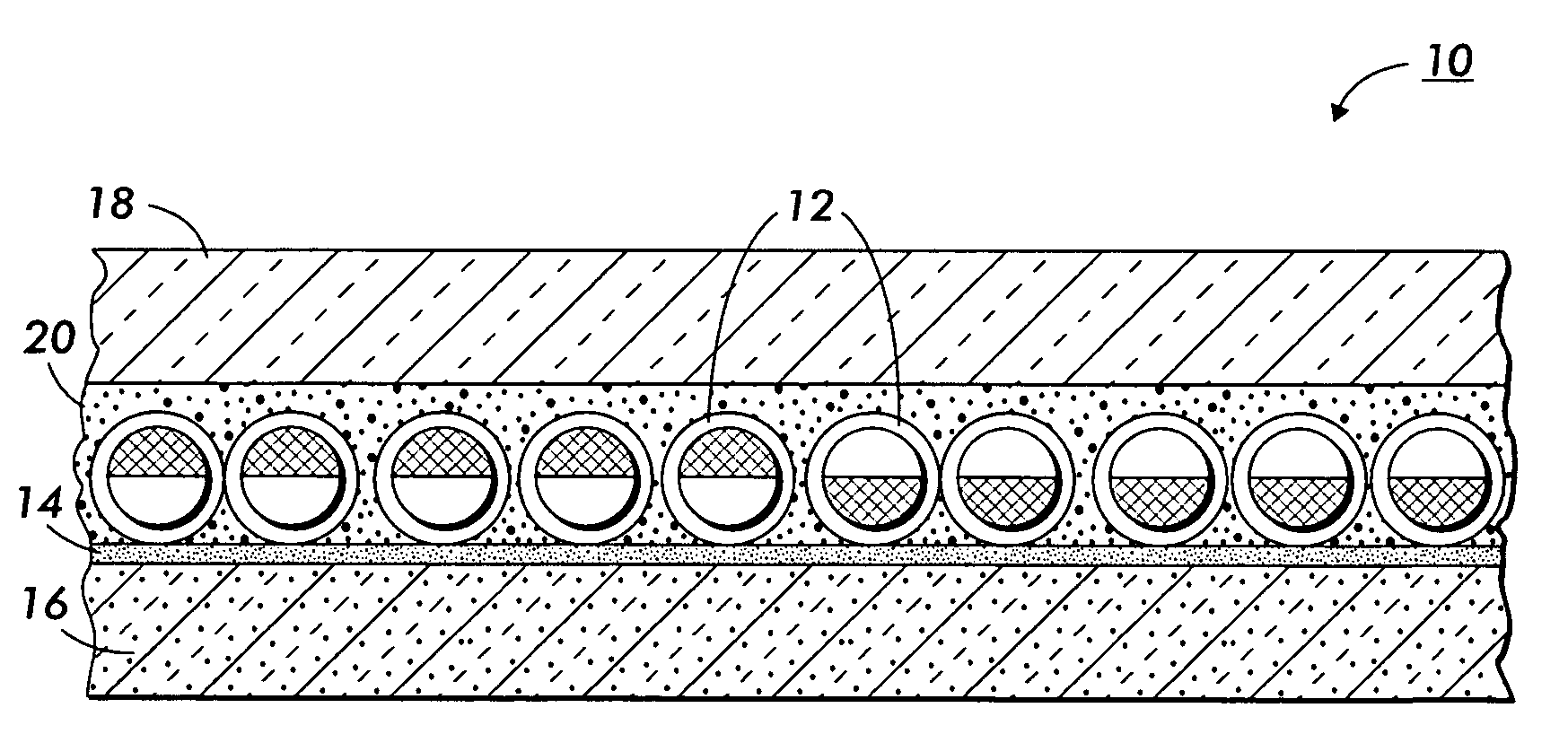Contrast enhancement in multichromal display by incorporating a highly absorptive layer
a multi-chromal display and high absorption technology, applied in the field of display members, can solve the problems of poor contrast, thick display, and display that does not have the high brightness and contrast characteristics of ordinary white paper, and achieves improved brightness, improved optical contrast, and low switching voltage
- Summary
- Abstract
- Description
- Claims
- Application Information
AI Technical Summary
Benefits of technology
Problems solved by technology
Method used
Image
Examples
example 1
[0033]a highly absorptive black layer was produced by depositing a toner layer on xerographic white paper. The optical reflectances for the black layer and the white paper were respectively about 1% and 85%. A thin transparent adhesive layer was formed by spraying onto the toner layer and white paper substrate. Capsules of bichromal (black and white) beads, approximately 125-150 μm in diameter, were then cascaded over the adhesive surface several times to yield a close-packed monolayer. The structure was then sandwiched between two ITO coated glass electrodes and the optical reflectance was measured.
[0034]The results illustrate that by using a highly absorptive black background, the optical contrast ratio could be enhanced from 1.3 to 2.
example 2
[0035]The optical contrast that a display device incorporating a highly absorptive layer is potentially capable of providing was determined. To simulate the optical effects of bichromal beads having perfect complementarily and bichromality, i.e. exactly half black and half white, devices were fabricated by coating respectively a close-packed monolayer of bare monochromal black beads (approximately 100 μm in diameter) and bare monochromal white beads (approximately 100 μm in diameter) onto a highly absorptive black substrate (black toner layer) as well as a highly reflective white substrate (white paper). The devices were then sandwiched between ITO (indium-tin-oxide) coated glasses and the optical density was measured.
[0036]With the white substrate, a high reflectance ˜56% was obtained, which decreased only slightly to ˜43% for the black substrate. However, the contrast ratio was greatly increased from 14 for the white substrate to 28 for the black substrate.
example 3
[0037]A highly absorptive black layer was produced by depositing a toner layer on xerographic white paper. The optical reflectance for the black layer and the white paper was respectively about 1% and 85%. A thin transparent adhesive layer was formed by spraying onto the toner layer and the white paper substrate. Capsules (approximately 212-300 μm in diameter) containing white electrophoretic pigment particles of TiO2 / polymer dispersed in a dyed dielectric fluid (0.2% Oil Blue N and 0.2% Sudan Red in Isopar M) were then cascaded over the adhesive surface several times to yield a close-packed monolayer. The structure was then sandwiched between two ITO coated glass electrodes and the optical reflectance was measured.
[0038]The results showed that by using a highly absorptive black background, the optical contrast ratio could be substantially enhanced (from about 1.5 to about 3).
PUM
| Property | Measurement | Unit |
|---|---|---|
| thickness | aaaaa | aaaaa |
| white reflectance | aaaaa | aaaaa |
| diameter | aaaaa | aaaaa |
Abstract
Description
Claims
Application Information
 Login to View More
Login to View More - R&D
- Intellectual Property
- Life Sciences
- Materials
- Tech Scout
- Unparalleled Data Quality
- Higher Quality Content
- 60% Fewer Hallucinations
Browse by: Latest US Patents, China's latest patents, Technical Efficacy Thesaurus, Application Domain, Technology Topic, Popular Technical Reports.
© 2025 PatSnap. All rights reserved.Legal|Privacy policy|Modern Slavery Act Transparency Statement|Sitemap|About US| Contact US: help@patsnap.com


